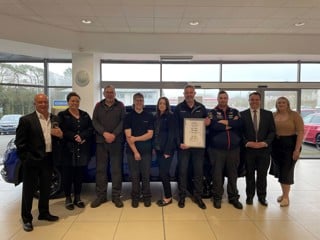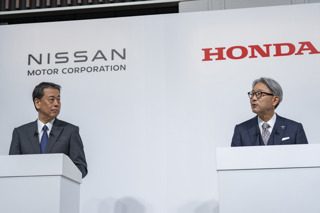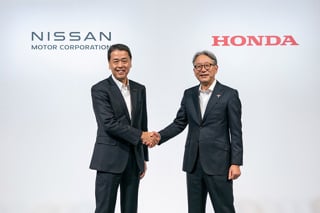At the heart of the new plans is an adjustment to how dealers achieve their bonus. Currently, the 6% pot is split 2% on sales volume, 1% on petrol/diesel mix, 1% on CSI, 1% on retail hours sold and 1% on local business plans.
Dealers have had their say on how the bonus should be divided – although this has led to some disagreement within the network. The new arrangement is not expected to differ significantly, although Honda is considering dropping the CSI element.
“CSI should be more training and development focused rather than stick and carrot, so we might remove that from the bonus structure,” says Ewan Ramsay, Honda UK general manager – cars. “CSI has to be an integral part of the manufacturer-dealer relationship.”
Honda has linked its standards to the European programme, which is intended to simplify requirements and remove cost.
The company has calculated the cost of the administrative burden it places on dealers and says measures put in place are already having a positive effect. It also has a working group inside the M25 looking at how overheads can be reduced.
#AM_ART_SPLIT# Last month Honda presented its business plans for the next four years to dealers (Honda’s own plans extend to 2015). “We treat dealers as investors in the business, almost as shareholders,” says Ramsay. “If we can get agreement on 80% of issues with the national dealer council as a rough rule of thumb, then we are happy. We probably agree on 90%.”
Dealer sales targets have been modified to take into account local market penetration and dealership capacity rather than just giving them numbers to hit. And Honda is putting more support behind the worst performers in the network.
Bernard Bradley, sales director, says: “There is a tendency in the industry to pile pressure on top performers to grow at the same rate. But you have to concentrate on the poorer performers and bring them up to standard.”
He analyses key performance indicators and is restructuring the field sales team around a geographic formation with 10-12 areas to improve communication.
At the moment the field team is split into three based on ownership – plcs, regional groups and independents. It means one member of the field team could be covering a retail partner with outlets spread across the UK.
“A regional team will have much better understanding of the issues in that area and will be better placed to support dealers,” says Bradley.
“We encourage the team to understand the specific requirements of each dealer and work with them to add value. If we can’t add value than there’s no point in us being there.”
Honda expects to sell 100,000 cars this year, rising to 110,000 next year. By 2010, it forecasts 150,000 through a mix of organic growth and new models. “These will be new cars in new segments – and some of them will create new segments,” says marketing director, Jeff Dodds.
#AM_ART_SPLIT# Honda gets HIP
The Honda network has seen 31 start-ups during the past couple of years, several of which have been on the Honda Investment Programme (HIP).
This sponsored retailer scheme has helped 12 general managers to become owners over its eight-year life. Honda currently has four on the programme, which has a five-seven-year payback time.
Honda says most managers pay off the loan early – a measure of the programme’s, and the franchise’s, success.
The return on investment plan for a start up business is year one loss, year two break even, year three profit. Consequently, given the change and growth in the network over the past year, 19 dealers in the 198-strong network are loss-making – 11 of which are within their first 18 months of trading.
Honda advises all its retailers to put more emphasis on used cars, which in some cases is struggling to keep pace with new car growth, to boost profits. Problems usually concern lack of dealership space. One solution Honda is considering is to turn dealerships into a retail space with product storage and servicing/repair elsewhere.
Raising used car profits will help dealers raise return on sales. The network average is 1.6%; Honda’s ambition is to lift this figure to 3%.

















Login to comment
Comments
No comments have been made yet.